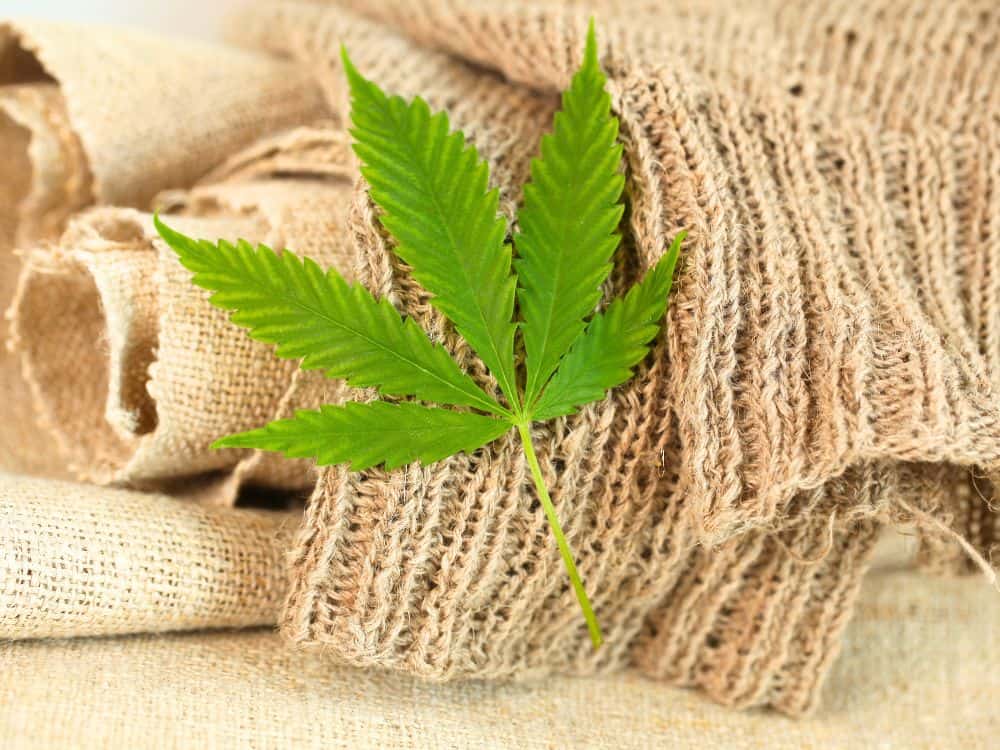
What Is Hemp Fabric?: High-ly Overrated Or Super Sustainable?
Hemp is hip and happening—but just what is hemp fabric?
You’ve probably only been hearing about it recently, but hemp fiber has been around forever.
Picture this, you’re in Egypt on a tour of an ancient tomb. That mummy you gawk over is wrapped in cloth—hemp cloth!
There are several reasons why hemp fabrics were used in ancient civilizations in the Middle East, Asia, and China—they’re much the same reasons why it’s making a resurgence in sustainable fashion today.
With all the environmental harm brought on by fast fashion, we’re excited about a future with more fields of hemp growing (and more hemp fabric clothes, too!).
So let’s (s)talk more about hemp sustainability and why weed be lost without this fantastic fiber.
1. What Is Hemp Fabric Made Of
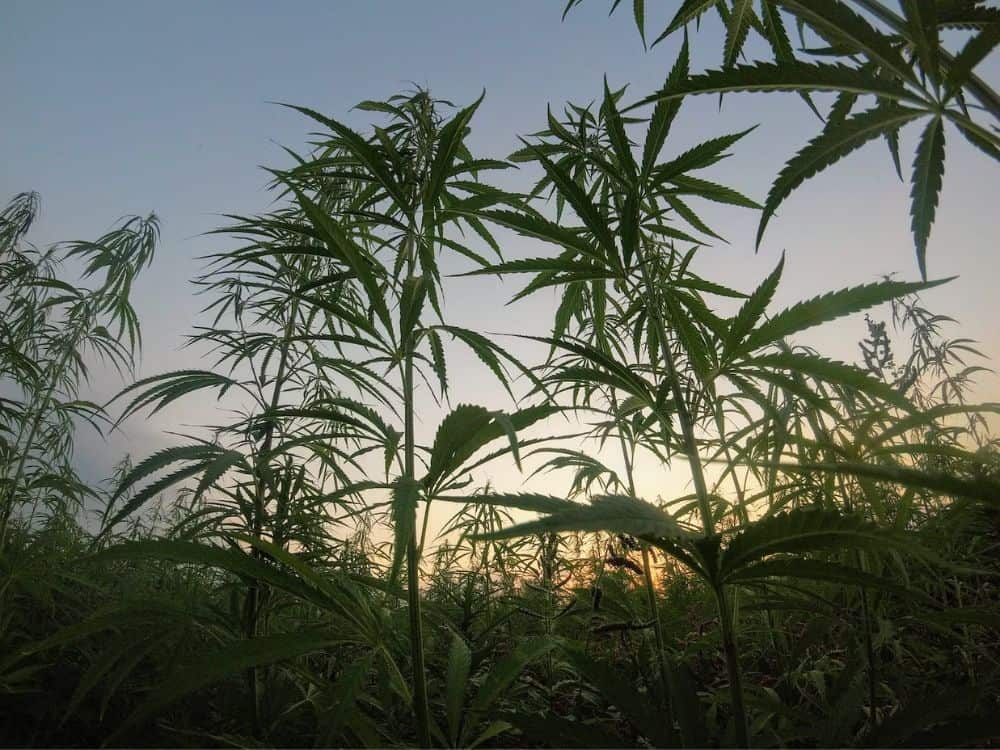
Is hemp a natural fiber? If so, what is hemp fabric made from?
This may blow some minds, but hemp actually comes from the Cannabis sativa plant. That’s right, the same plant responsible for marijuana.
Before you jump to conclusions and think that you can roll up that new hemp tee shirt for a little relaxation after a long day, think again.
Some varieties of the Cannabis sativa plant are bred to be higher (pun intended) in THC (delta-9-tetrahydrocannabinol), the main psychoactive chemical in cannabis.
When it comes to your eco-friendly clothes, however, the specific breed of Cannabis sativa used has extremely low levels of THC. This “industrial hemp” is also bred to have stronger fibers
History & Cultural Significance Of Hemp Fabric
Hemp has been cultivated for thousands of years, making it one of humanity’s oldest crops. From ancient China to Egypt and beyond, hemp farming has a rich history deeply intertwined with human civilization.
Its longevity as a cultivated plant is a testament to its resilience and usefulness.
Archaeological evidence reveals the enduring appeal of hemp fabric. The oldest known pieces of hemp fabric, dating back at least 6000 years, have been unearthed at various archaeological sites around the world, speaking to the fiber’s integrity and longevity.
What Is Hemp Fabric Used For?
Thanks to its versatility and durability, hemp has long been a globally traded commodity.
For centuries, countless civilizations have used hemp fabric for clothing, bedding, home textiles, ropes, and sails.
With so many forms and applications, what does hemp fabric feel? Is hemp clothing soft?
Hemp as the common clothing consumer is likely to experience it feels similar to cotton, just a little tougher (though far from scratchy or uncomfortable).
2. How To Make Hemp Fabric Clothing
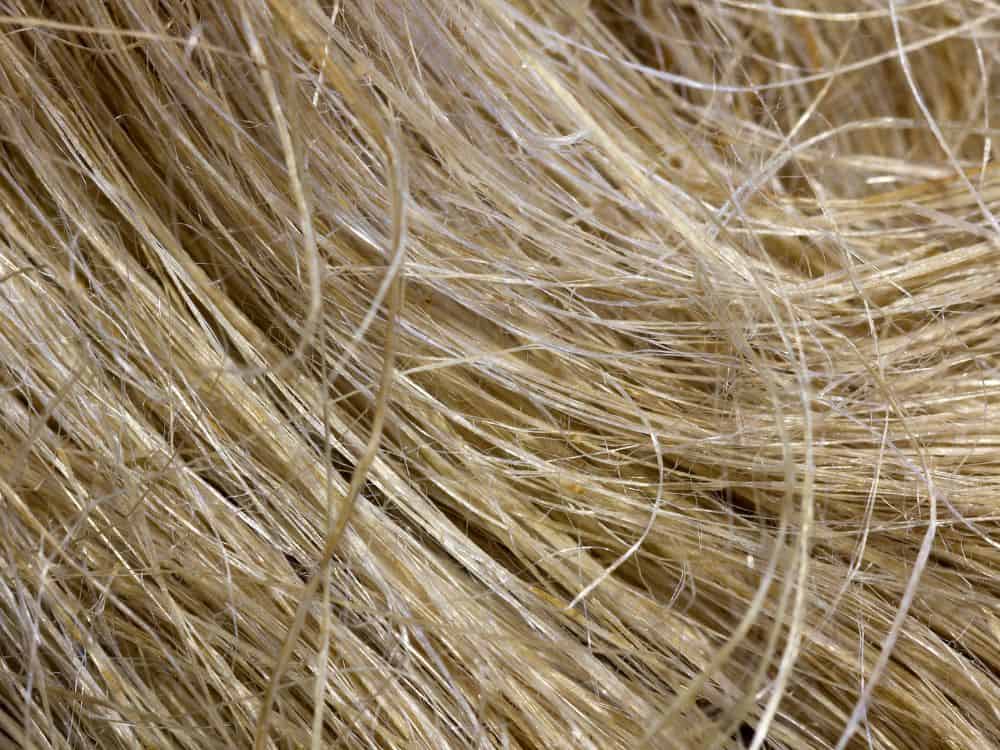
It sounds simple to say hemp fabric is derived from the versatile cannabis sativa plant, but when it comes to how to make fabric from hemp, there are numerous steps involved.
1. Harvesting:
Harvesting is done by hand by cutting the industrial hemp plants at the base.
The timing of the harvest is crucial to ensure the best fiber quality. Hemp plants are typically ready for harvest when the leaves begin to fall off and the stalks become woody.
2. Retting & Drying:
Hemp stalks are exposed to moisture and bacteria to break (instead of chemicals) down the pectin that binds the natural plant fiber. There are two primary methods:
- Dew retting: Uses natural moisture and takes several weeks
- Water retting: Submerges the stalks in water and takes about a week
Stalks are then dried—either in the sun or mechanically—to remove excess moisture.
3. Breaking & Scutching:
The dried stalks are then mechanically processed to separate the long, strong fibers from the woody core first by breaking the stalks to loosen the hemp fiber, followed by scutching (removal of the woody parts).
4. Hackling / Combing:
To refine the natural fibers and remove impurities, they are hackled or hand combed through a series of increasingly fine combs or hackles.
5. Spinning & Weaving:
The clean, separated hemp fibers can now be spun into hemp yarn using traditional spinning wheels or modern machines.
Spun threads are woven together using spinning bobbins. Different weave patterns can be used to create various types of hemp fabrics, including canvas, twill, or plain weaves.
6. Finishing:
The fabric may undergo finishing processes such as washing, bleaching, dyeing, or printing, depending on the desired final product.
3. Is Hemp Sustainable?
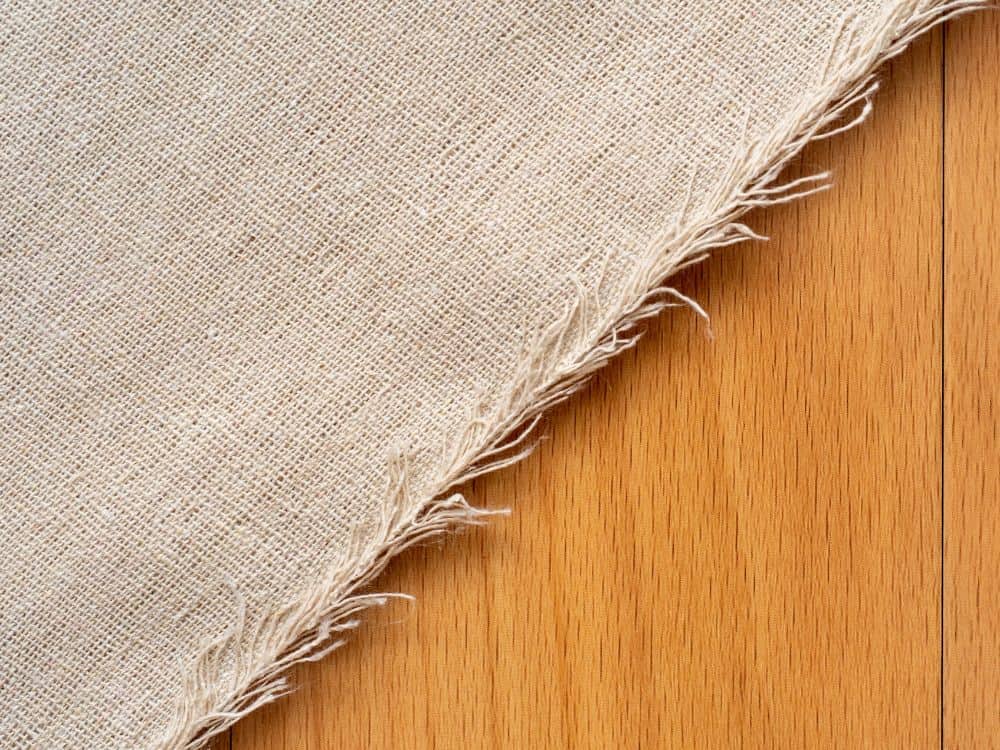
Now that we know the nitty-gritty behind industrial hemp textiles, let’s dig into the dirt behind hemp sustainability.
With more and more brands using hemp fabric for clothing, it’s important to know how it stacks up against other sustainable fabrics like organic cotton.
Carbon Negative Farming
You might be surprised to learn that hemp crops are carbon-negative, which means they absorbs more carbon from the atmosphere than they release. Thus industrial hemp farms are an ideal “carbon sink”.
When hemp grows, it engages in a process called carbon sequestration. This means it draws in CO2 from the air and stores it in its fibers. For every ton of hemp produced, about 1.62 tons of CO2 are removed from the air.
In a world grappling with climate change, this characteristic is like a superhero cape for hemp.
Low Input Requirements
According to the Stockholm Environment Institute, the water required to produce 1kg of hemp is somewhere between 300 and 500 liters.
Now compare that to the 10,000 liters required to produce the same 1kg of cotton.
Hemp is also high-yielding and produces much more product on much less land, without the need for any chemical pesticides
Hemp’s growth is also quick—taking around just 120 days to become the stalk that gets turned into sustainable jeans—and the land can be reused every couple of years, something that takes much longer with flax or cotton.
No Industrial Waste Byproducts
Unlike some industries that generate tons of waste for every unit of production, hemp stands out by utilizing almost every part of the plant.
This versatility and resource efficiency allows for over 25,000 industrial uses.
From the hemp plant, we can get textiles for clothing, hemp oil for beauty and sustainable skincare products, paper, seeds for nutrition, fibers for construction materials, animal bedding, vehicle biofuel, and even a plastic substitute for vehicles themselves.
Life is a high-way, after all.
Soil Bioremediation
Hemp cultivation isn’t just about reaping benefits for us; it also gives back to the earth.
The process of growing organic hemp fabric can actually replenish soil nutrients and improve soil health.
As a hemp plant grows, it naturally detoxifies the soil by absorbing heavy metals and purifying contaminants. This cleansing action leaves the soil in better condition than it was before.
Organic Hemp Fiber Production
If you’re shopping for hemp products, be sure to seek out organic hemp fabrics, or those that are USDA National Organic Program (NOP) or Global Organic Textile Standard (GOTS) certified.
While hemp requires very little to nothing by way of herbicides and pesticides, it has been known to require more nitrogen (fertilizer) than other textiles.
Unfortunately, this is mostly due to USDA restrictions.
However, after the 2018 Farm Bill legalized the cultivation of hemp in the United States and removed it from the list of controlled substances, it became legal for industrial hemp (containing less than 0.3% THC by dry weight) to receive USDA organic certification.
The bill also allows states to regulate hemp production and sales within their borders, which has led to a growing number of states legalizing hemp farming and thus a growing number of hemp fabric wholesalers.
So, is hemp sustainable?
Absolutely! From carbon-negative farming to minimal waste production, soil healing, organic options, sustainable hemp proves itself as a superhero of sustainable fashion.
Now let’s talk about the wearable benefits of hemp clothing material.
4. Advantages & Disadvantages Of Hemp Fabric
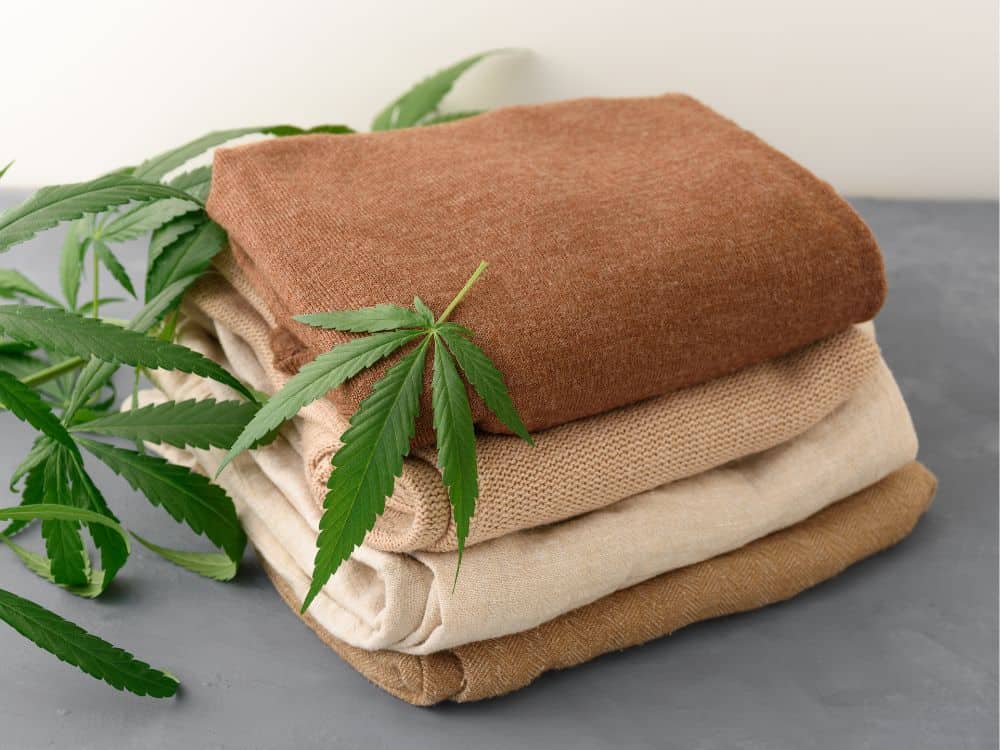
We’ve been speaking high-ly of hemp’s sustainability, but is hemp a good fabric to wear?
Aside from being one of the more sustainable fabrics out there, hemp fabric has several other advantages to celebrate (and a few disadvantages to be aware of).
Advantages Of Hemp Fabric
One of the standout advantages of hemp fabric is its exceptional durability. When cared for properly, hemp fabric products can last an impressive 20 to 30 years. The secret behind this remarkable durability lies in the inherent strength and length of hemp fibers.
This also helps it retain shape and integrity after hundreds of washes.
However, that’s not all. Here are some other benefits of hemp fabric:
- Lightweight: Is hemp a cool or warm fabric? Well, it’s one of the lightest fibers on the market, weighing one-third less than wool or cotton. So is hemp breathable? Definitely!
- Versatile: 100% hemp fabric is fantastic, but it also readily blends with other fibers to create hybrid hemp materials that combine the best of both worlds. You’ll commonly see hemp blended with cotton, TENCEL™, or even synthetic fabrics like recycled polyester.
- Naturally high UPF (ultraviolet protection factor): One of the biggest hemp clothing benefits is that, based on SGS testing by hemp underwear brand WAMA, it is 99.9% effective in blocking UV-A and UV-B rays, meaning it qualifies as a top tier UPF 50+ fabric. Still, don’t forget your zero waste sunscreen!
- Antimicrobial: Hemp is hypoallergenic and resistant to harmful microbes, mold, and mildew, which means hemp garments won’t smell bad after one wear.
- Hydrophobic: One of the most unique properties of hemp fabric as a natural fiber is that it can repel light moisture without any treatment needed.
- Easy to dye: Wondering, “What color is hemp fabric?” It’s colorless, which means it accepts dyes of all kinds with ease, and generally requires less dye, too.
Disadvantages Of Hemp Fabric
With so many pros, what are the disadvantages of hemp fabric?
While hemp fabric boasts a multitude of advantages, it’s essential to acknowledge the one potential disadvantage: cost.
To buy hemp fabric wholesale, costs range from $7–$10 per meter (compared to cotton’s $1–$2).
Oddly enough, production of organic hemp fabric itself is otherwise more cost-effective than cotton, thanks to its minimal environmental requirements and necessary growth inputs.
So why the high cost?
While the process of creating hemp fabric is eco-friendly due to its largely manual nature, this also means it’s incredibly labor-intensive and problematic for a few reasons:
- Hemp stalks are large and difficult to harvest, for which no ideal machinery exists.
- Drying takes at least one week, followed by 1–6 weeks required for retting (depending on type), so hemp production is extremely time intensive, too.
- Finishing and combing must be done by hand.
This all contributes to market factors—like limited availability and lower demand—that make hemp fabric products more expensive than conventional fabric options.
In order to bring down the production costs of hemp, a number of projects are run focusing on better harvest-machinery and a faster, chemical-free retting process, like Denmark’s Hemp4tex.
But while hemp may come with a slightly higher price tag, it’s an investment in both quality and sustainability. When you consider the long lifespan and eco-friendly attributes of hemp garments, the upfront cost can be well worth it.
5. How To Care For Hemp Fabric Clothing
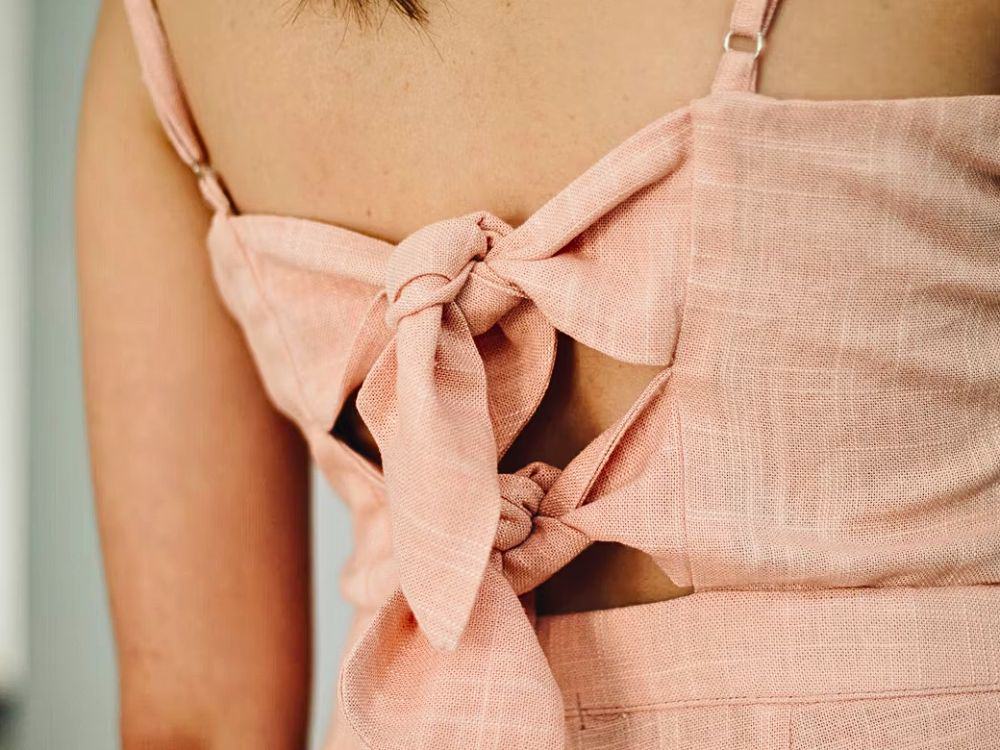
Now that you’ve chosen the eco-friendly path with hemp fabric clothing, it’s important to know how to care for it to ensure it remains in top-notch condition for years to come.
Fear not, taking care of hemp garments is a breeze.
Washing: Does Hemp Clothing Shrink In The Wash?
Like with most fabrics, be gentle when washing hemp. Use the gentle wash cycle or hand wash paired with a gentle, natural laundry detergent.
We like to use cold water (warm if we must), but always avoid hot water, which may shrink hemp fabric.
Do not bleach, which can weaken fibers and reduce the lifespan of your garments.
Fortunately, hemp’s natural resistance to mold and mildew means you don’t need bleach to keep it fresh.
If you have some stains that need lifting, oxygen bleaches (hydrogen peroxide) work much better than chlorine bleaches anyway and won’t harm any sustainable dyes or color.
Drying: Does Hemp Shrink In The Dryer?
You won’t have to be too fussy when it comes to drying hemp clothes. If you do decide to machine dry, just be mindful of the time and don’t let the hemp fiber get too hot (low heat works best).
But considering it’s so quick-drying, you might as well conserve energy at home and line dry your hemp items for optimal care and longevity.
Plus, the gentle sway of hemp fabric in the breeze adds a touch of tranquility to your laundry routine!
Ironing: Can Hemp Clothing Be Ironed?
If an iron is required, it works best when the hemp fabric is still damp. Use medium to high heat, and start on the wrong side (or the inside of the garment) first before flipping it over to the outside.
After ironing, just hang to dry fully and voila—that hemp dress is crisp and ready for date night!
6. Hemp Fabric Vs Cotton & Other Fabrics
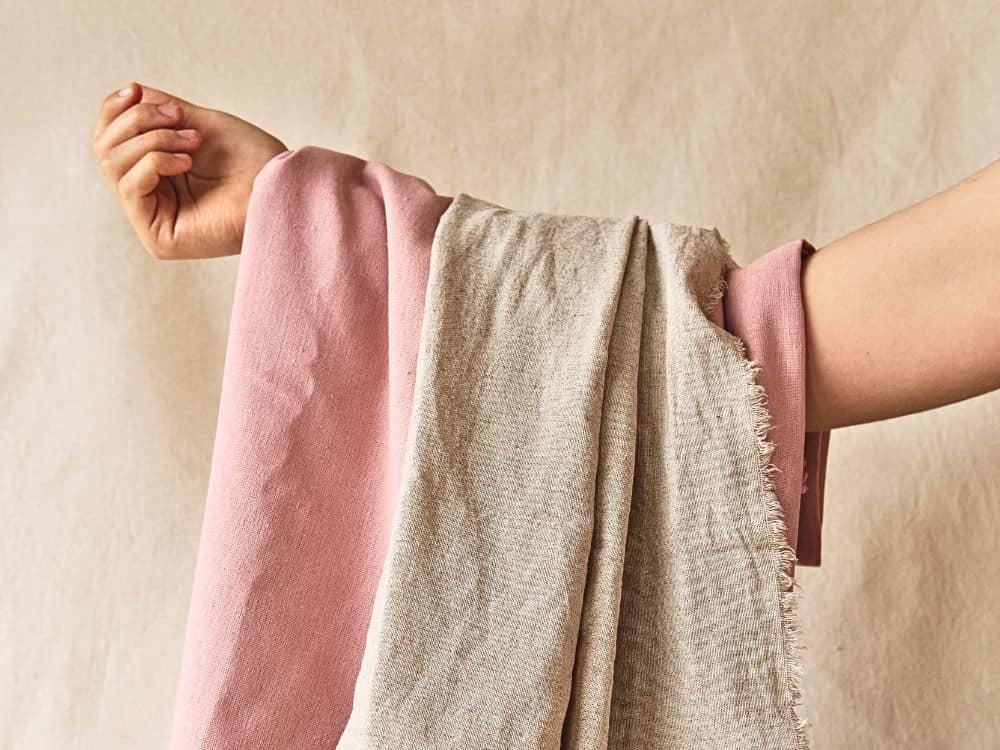
Hemp Vs. Cotton
Is hemp fabric better than cotton?
Hemp takes the lead in water and chemical efficiency. It requires less water and about half as much land to grow than cotton, even when it’s organic cotton. If we’re talking conventional cotton, hemp uses FAR less water and chemicals.
Hemp fabric is also known for its durability, while cotton tends to wear out more quickly.
Not only can hemp last much longer than cotton (20–30 years compared to just 10 years), it’s also about three times as strong, faster drying, less absorbing, and more UV protective.
In terms of the softness of hemp clothing vs cotton, cotton has the edge, organic cotton especially. Comparatively, hemp feels slightly tougher, like a soft canvas).
Because of that, brands often use a blended hemp cotton fabric to capture the benefits of both.
Hemp Vs. Linen
Linen is very similar to hemp, except that it’s derived from the flax plant, whose cultivation and processing also requires minimal water and chemical inputs.
However, flax is torn up by its roots while the cannabis plant is cut, leaving the roots and a much healthier soil that holds more water.
Like hemp, linen fabric is light and breathable, but unlike the 3-foot fibers of linen, hemp fabric fibers can reach up to 15 feet, making it more durable.
Linen fabrics also tend to wrinkle more easily than hemp. While this characteristic gives linen a relaxed, lived-in look, it might require a bit more maintenance to keep your garments wrinkle-free.
Linen garments are generally priced higher, too.
Hemp Vs. Bamboo
Bamboo fabric is known for its softness and luxurious feel against the skin, surpassing hemp in terms of comfort.
While both consume high amounts of CO2 as they grow, bamboo holds an advantage in water efficiency, requiring less water to grow than hemp. This can be an essential factor in regions with water scarcity, making bamboo a more suitable choice for water-conscious consumers.
However, bamboo fabric is often manufactured using caustic chemicals, though it can be sustainably turned into either lyocell or modal via closed-loop processes.
When it comes to sustainable fabric choices, hemp stands out. But how does it compare to other popular materials like cotton, linen, and bamboo?
7. Where To Buy Hemp Fabric Clothing

Once you start your search for hemp fabric clothing, you may be surprised to find numerous (and growing) hemp clothing brands.
Even mainstream brands have embraced the fiber, like Levi’s, and their hemp denim fabric.
Some of our favorites include:
- WAMA: They specialize in making sustainable underwear and organic bralettes from pure hemp material.
- 8000Kicks: For essential accessories like sustainable sneakers and sustainable backpacks, this brand is 100% hemp fabric happy.
- Frank And Oak: While they don’t exclusively use hemp, Frank And Oak is a go-to for super soft basics like sustainable t-shirts made of hemp fabric.
- VALANI: Their super soft TENCEL™ and hemp jersey fabric makes for elegant blouses, dresses, and jumpsuits.
- Toad&Co: Hemp fabric is a staple in Toad&Co’s large fabric catalog, used to craft a huge range of sustainable outdoor clothing and casual essentials.
Did you know we Have a Newsletter?
We cover the latest in sustainable living, fashion, zero waste, beauty, travel, finance and more…
Final Thoughts On Sustainable Hemp
Even with such a lengthy history and a tremendous range of sustainable uses, the world is only getting a small taste of hemp textiles now.
The poor Cannabis sativa plant still has a pretty bad rep as most of the world instantly assumes that marijuana and hemp are totally synonymous.
Stigma and legal regulations make it really hard for farmers to grow the plant—even though we’re well aware of all of its ecological benefits!
In fact, hemp was actually banned in the UK until 1993 and by 2003, it still only comprised 0.15% of global textile production.
Fortunately, the stigmatization is already starting to change in places like Canada and the USA, where governments are not only legalizing recreational marijuana but also recognizing the perks of planting sustainable hemp.
To help (h)empower the movement further, feel free to share this article, so we can(nabis) live hemp-ily ever after!
Pin these:
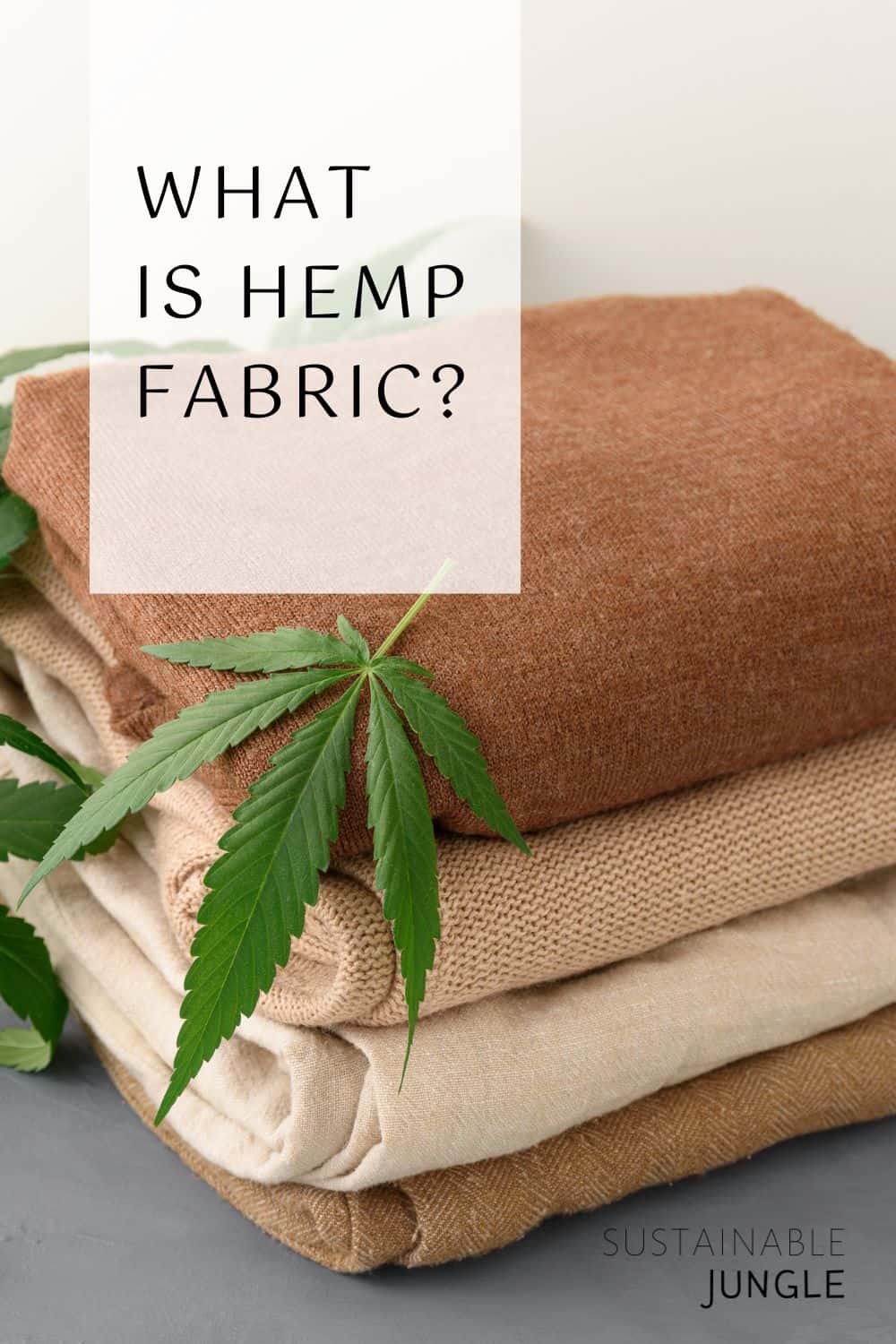
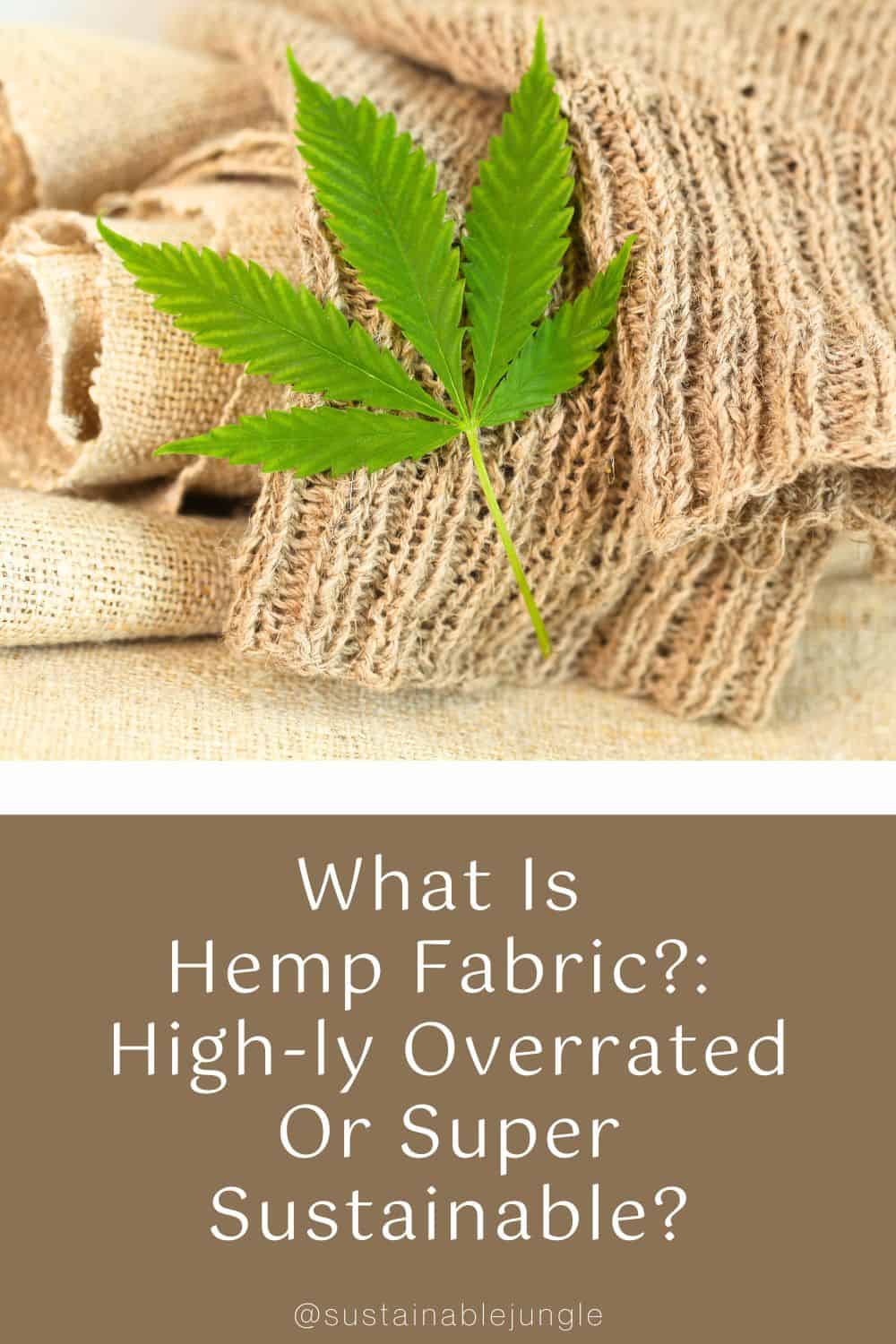

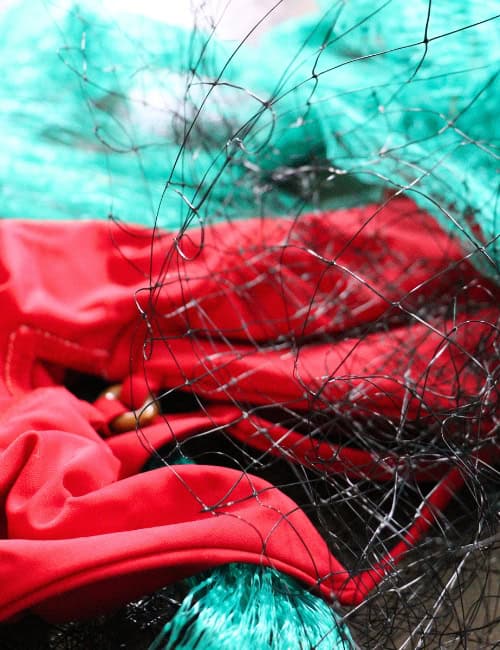

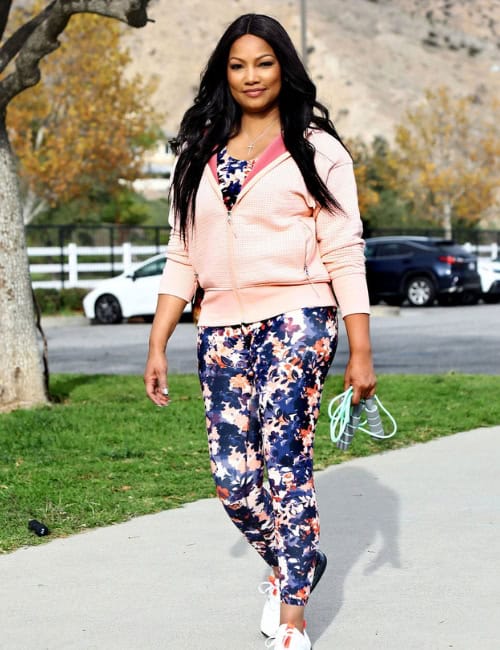
I’m a little concerned by citing cotton as another sustainable fabric. Cotton isn’t sustainable at all. It uses a ton of fertilizer and water and pesticides compared to other plants, and most cotton production has bad labor standards even to this day. Even organic fair trade cotton uses a lot more water and organic fertilizer than other organic plants (a definitely unsustainable amount of resources, especially at our current high use levels!)- it’s a very resource intensive fabric. It’s not as extremely harmful as plastic fabrics because it is at least renewable and compostable, but that doesn’t make it sustainable and doesn’t change how much harm growing it does. I don’t mind a bit of cotton mixed in to a fabric to make for softer hemp clothes or other actually sustainable clothing materials, but by itself it’s not sustainable and should be used sparingly.
Good reading. Very difficult to find simple hemp clothing here in USA
It is so difficult Susan! We’ve just published an article with a longer list of hemp clothing brands if that’s at all helpful!